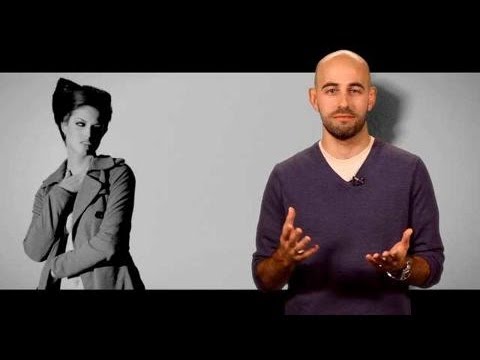The Exciting Potential of Laser Technology: A Conversation with a Laser Physics Expert
Summary
Laser technology has come a long way since its invention in 1960, and today it has numerous applications in fields ranging from medicine to high energy physics. In this article, we speak with a laser physics expert who discusses the development of high intensity laser physics, their work to increase laser power and compress energy into smaller spaces, the potential to achieve the Schwinger limit and break the vacuum, and their hope for overcoming the plateau in laser technology progress. We also explore the potential medical applications of laser technology and the speaker’s work to build even larger and more powerful lasers.
Table of Contents
- The History and Evolution of Laser Technology
- The Development of High Intensity Laser Physics
- The Potential to Achieve the Schwinger Limit
- Medical Applications of Laser Technology
- Overcoming the Plateau in Laser Technology Progress
- Conclusion
Introduction
Laser technology has come a long way since it was first demonstrated in 1960. Today, lasers have become an indispensable part of integrated circuitry and x-ray generation, and their applications in numerous other fields like high energy physics, gravity wave and black hole research, medicine, and machining are being realised worldwide. Recently, the Nobel Prize for laser technology was awarded, which has only further increased its importance. In this article, we speak with a laser physics expert who dives deep into the subject, discussing the development of high intensity laser physics, potential medical applications, and the potential for further development in the field.
Q&A
The History and Evolution of Laser Technology
Q: Can you tell us a bit about the history of laser technology and how it has evolved over time?
A: Sure. The first laser was demonstrated in 1960, and it has come a long way since then. Initially, people were just working on lasers that were relatively low power, and it wasn’t immediately clear what the applications of these lasers would be. But as scientists began to explore the properties of lasers, they quickly found that they could be used for a wide range of tasks, from cutting metal to medical applications. As the technology progressed, people began to focus more on high intensity laser physics, which is where we are today.
The Development of High Intensity Laser Physics
Q: Can you explain what high intensity laser physics is, and how it differs from other forms of laser technology?
A: High intensity laser physics is all about increasing the power of lasers and compressing energy into smaller spaces. Essentially, we’re working to find ways of generating laser beams that are incredibly powerful, so that we can use them for tasks like driving chemical reactions in specific areas, or even creating a vacuum by breaking the vacuum threshold. This is different from other forms of laser technology, which might be more focused on precision cutting, for example.
The Potential to Achieve the Schwinger Limit
Q: You mentioned the Schwinger limit – can you explain what this is, and why it’s an important goal for high intensity laser physics research?
A: The Schwinger limit is essentially the point at which the intensity of a laser beam becomes so high that it’s able to break the vacuum – that is, create particles from the vacuum itself. This is a very difficult threshold to reach, but if we could achieve it, it would open up a whole new field of physics research. It could also potentially be used to drive chemical reactions in specific areas of the body, which is a goal of some medical researchers.
Q: How close are we to achieving the Schwinger limit?
A: We’re still some way off, but we’re making progress. There are a number of different research groups around the world who are working on this problem, and collectively we’re learning more about how to push the boundaries of laser technology. Ultimately, it’s difficult to predict when or if we’ll ever achieve the Schwinger limit, but it’s an exciting goal to work towards.
Medical Applications of Laser Technology
Q: You mentioned the potential for using lasers in medicine. Can you give us a few examples of how lasers are currently being used, and what the future possibilities might be?
A: Laser technology is already being used in a number of medical applications, such as in laser aesthetics, cataract surgery, and the treatment of benign prostatic hyperplasia. However, there’s still a lot of potential for lasers in medicine. For example, high intensity laser beams could be used to target and destroy tumours with greater accuracy, or they could be used to drive chemical reactions that help the body heal itself. We’re still learning a lot about what’s possible in this field.
Overcoming the Plateau in Laser Technology Progress
Q: You mentioned that there’s a plateau in laser technology progress – can you explain what this means, and what you’re doing to overcome it?
A: Essentially, what we’re seeing is that the rate of progress in laser technology is slowing down. There are a number of reasons for this, but one major factor is that we’re reaching the limits of what’s possible with current technology. In order to overcome this plateau, we need to find ways of building even larger lasers and combining multiple lasers into a coherent source. We’re also exploring new materials and methods for building lasers that might help us to push the boundaries of what’s possible.
Q: Why is it important to overcome this plateau?
A: The potential applications of laser technology are enormous, and we’re only just scratching the surface of what’s possible. If we can find ways of building more powerful lasers, we’ll be able to do things like drive chemical reactions in specific areas, target tumours with greater accuracy, and explore new frontiers in high energy physics research. Beyond that, there’s simply the excitement of breaking through a new technological barrier – to be able to say that we’ve achieved something that was once thought impossible.
Conclusion
Laser technology has come a long way since its invention in 1960, and today it has numerous applications in fields ranging from medicine to high energy physics. Through our conversation with a laser physics expert, we’ve explored the development of high intensity laser physics, potential medical applications, the potential to achieve the Schwinger limit and break the vacuum, and the plateau in laser technology progress. While there are still many challenges to overcome, the potential for laser technology is enormous, and we’re excited to see what new breakthroughs the future will bring.







